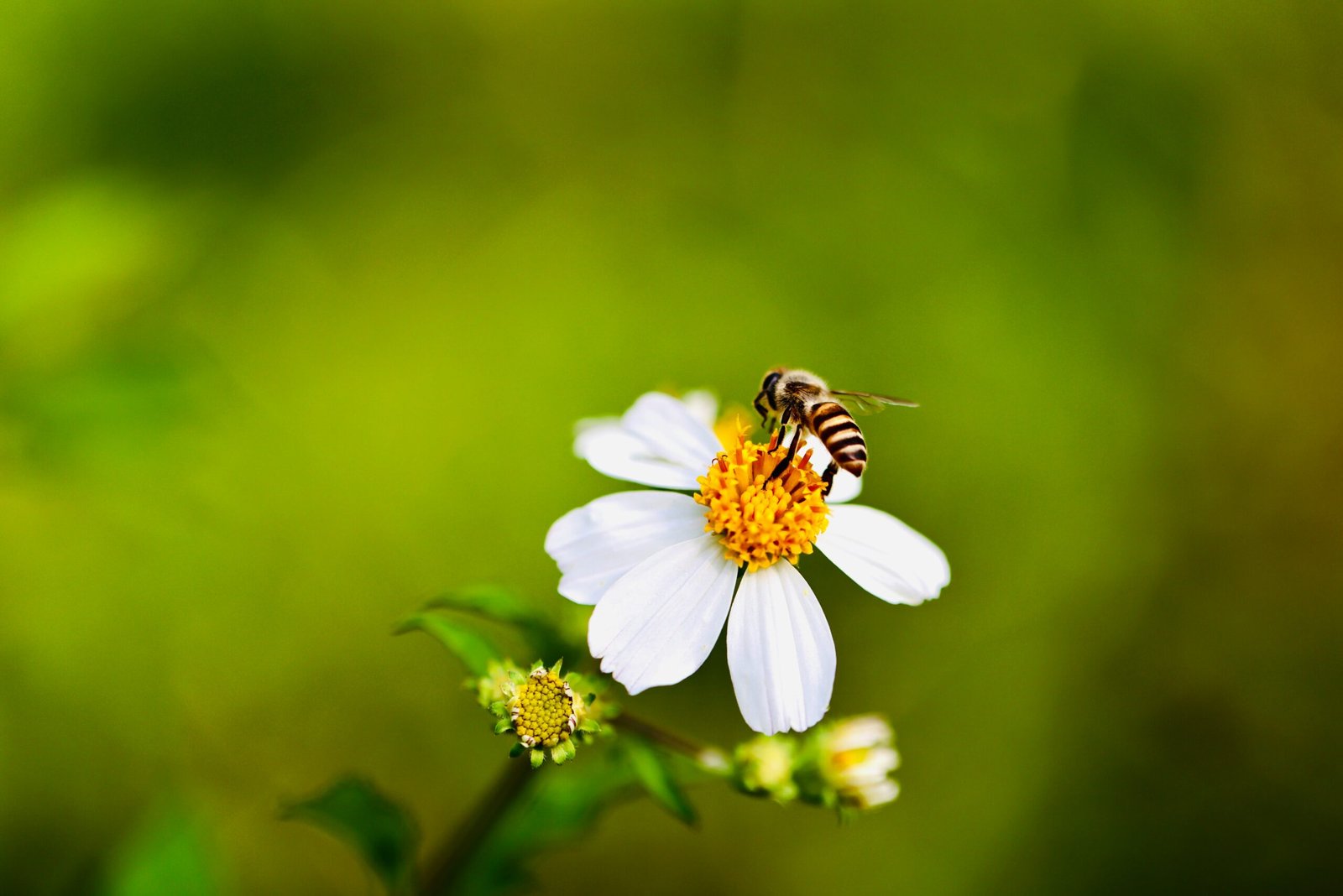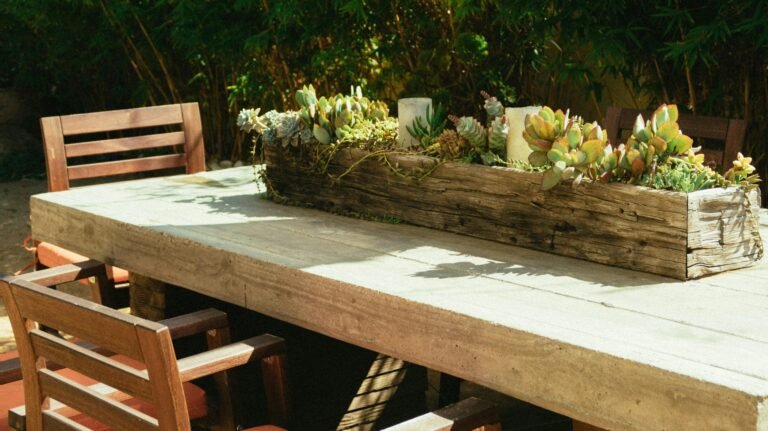“I want to help the bees, but I’ve got no clue where to start.”
If that sounds like you, you’re not alone — and you’re definitely in the right place.
The decline in bees and butterflies isn’t just sad — it’s serious. These tiny pollinators are crucial to our food supply and the health of entire ecosystems, but their numbers are dropping fast due to habitat loss, pesticides, and climate change. The good news? Your garden, balcony, or even your window box can help turn things around.
You don’t need to be a green-fingered expert. You don’t need a huge plot of land. What you do need is a bit of guidance, some pollinator-friendly plants, and the willingness to let nature do its thing.
I’ve helped many people — from total gardening newbies to experienced growers — turn their outdoor spaces into safe havens for bees and butterflies. In this article, you’ll learn exactly how to do that, step by step. From choosing the right flowers to avoiding common mistakes, you’ll get everything you need to create a garden that’s buzzing with life.
Why Pollinators Need Your Help
Bees, butterflies, and other pollinators are struggling — and fast. In the UK alone, we’ve lost around 97% of wildflower meadows since the 1930s, and with them, the vital habitats that pollinators depend on. Add pesticides, pollution, and climate change into the mix, and it’s no wonder populations are plummeting.
Here’s the thing: without pollinators, much of what we eat simply wouldn’t exist. Apples, strawberries, tomatoes — even coffee and chocolate — rely on pollination. In fact, one in every three bites of food you eat is thanks to a pollinator.
And it’s not just about food. Pollinators help plants reproduce, which keeps entire ecosystems thriving. They support biodiversity, feed birds and other wildlife, and keep soil healthy by maintaining plant variety. When pollinators disappear, the chain reaction is huge.
That’s why even the smallest garden or balcony can make a difference. Creating just a few square metres of pollinator-friendly space provides food, shelter, and a chemical-free zone where these insects can recover and thrive. It’s one of the most accessible, powerful ways you can support biodiversity — right outside your door.
What Makes a Garden Pollinator-Friendly?
At its core, a pollinator-friendly garden is one that gives bees, butterflies, and other helpful insects what they need to survive: food, shelter, water, and safety. It’s less about perfection and more about creating a welcoming, natural space.
Here’s what that looks like:
🌸 1. A Variety of Pollinator-Friendly Plants
Different pollinators are active at different times of the year, so you want blooms from early spring to late autumn. The more variety, the better. Bees love simple, open-faced flowers like lavender and borage. Butterflies often go for brightly coloured blooms like buddleia and verbena.
🏡 2. Native and Local Species
Pollinators have evolved alongside native plants, which means they recognise and prefer them. These plants are often hardier and better suit to your local soil and climate, too.
❌ 3. A Pesticide-Free Zone
Even “mild” pesticides can be lethal to bees. Opt for natural methods to deal with pests — or better yet, let nature balance itself out. A healthy garden attracts beneficial bugs that keep the bad ones in check.
💧 4. A Water Source
Bees and butterflies get thirsty. A shallow dish with pebbles or marbles (so they don’t drown) makes a perfect watering hole.
🐝 5. Shelter and Nesting Spots
Long grass, hollow stems, piles of twigs, or a bee hotel can provide shelter and nesting space. Butterflies might overwinter in a log pile or tucked away in a shed.
🌼 6. A Natural Layout
Neat rows and artificial turf won’t help pollinators. Let things grow a little wild. Group flowers together in “clumps” rather than single plants — it makes it easier for insects to spot and access them.
A pollinator-friendly garden doesn’t need to be big — it just needs to be intentional. Next, let’s talk specifics: which plants should you choose?
Choosing the Right Plants
You don’t need to overhaul your entire garden — just planting the right things in the right places can make a huge difference. The key is to choose plants rich in nectar and pollen, and aim for a variety that blooms across the seasons.
Here’s a beginner-friendly plant list that works well in UK gardens:
🌸 Spring Bloomers (March–May)
- Crocus – One of the first early food sources for bees.
- Lungwort (Pulmonaria) – Loved by bumblebees.
- Willow – If you’ve got space, early-flowering willows are gold for pollinators.
🌼 Summer Stunners (June–August)
- Lavender – A bee magnet that smells great and thrives in pots.
- Echinacea (Coneflower) – Tall, bold, and butterfly-friendly.
- Foxgloves – Great for long-tongued bees.
- Wild marjoram (oregano) – Edible and attracts a wide range of insects.
🍂 Autumn Options (September–October)
- Sedum (Stonecrop) – A late bloomer that feeds insects before winter.
- Ivy (when flowering) – Often overlooked, but ivy flowers are crucial late nectar.
🪴 For Small Spaces or Containers
- Thyme – Compact, great for bees, and perfect in a window box.
- Scabious – Long-flowering and easy to grow in pots.
- Calendula (Pot Marigold) – Bright, cheerful, and loved by pollinators.
Tips:
- Go for single flowers over doubles. Double blooms look fancy but often lack nectar or are hard for insects to access.
- Avoid sterile hybrids. Some cultivated plants have no usable pollen or nectar at all.
- Mix it up. Use a blend of flower shapes, heights, and colours to cater to a range of species.
Whether you’ve got a sprawling lawn or just a windowsill, you can grow something that helps. Next up: how to lay it all out in a way that actually attracts pollinators.
Design Tips That Attract Pollinators
It’s not just what you plant — it’s how you plant it. Smart garden design can make your space far more attractive and accessible to bees, butterflies, and other pollinators.
Here’s how to make your garden truly inviting:
🎯 1. Plant in Clumps, Not Singles
Pollinators are more likely to visit areas where they can gather food efficiently. Group the same plant in patches of at least three to five — it’s easier for insects to spot and work through.
🌈 2. Think in Colour
Bees tend to go for blue, purple, and white flowers. Butterflies love red, orange, and yellow. A colourful mix not only looks beautiful, it appeals to a wider range of species.
📏 3. Layer Heights
Mix low-growing flowers with taller blooms. This adds visual interest for you and gives different insects more feeding options. Bees might favour low, dense flowers, while butterflies will float toward taller, open blooms.
🔄 4. Plan for Year-Round Blooms
Make sure there’s always something in flower from early spring to late autumn. It keeps the food supply consistent and encourages pollinators to keep coming back.
🪨 5. Add Natural Features
Rocks, logs, and bare soil aren’t just rustic touches — they’re useful habitats. Solitary bees nest in soil, while butterflies might bask on a warm rock or find shelter in wood piles.
🏙️ 6. No Garden? No Problem
Even in a small space, you can use vertical planters, window boxes, hanging baskets, or repurposed containers to layer plants and mimic a natural garden feel.
🧩 7. Leave Some Mess
It’s tempting to tidy everything up, but pollinators thrive in a bit of wildness. Let a corner grow long, leave a log pile, or allow some dandelions to bloom — it all helps.
Beyond Flowers: Other Ways to Help
Plants are the main attraction, but a truly pollinator-friendly garden goes further. If you want to create a haven — not just a snack bar — here’s what else you can add.
💧 1. A Safe Water Source
Bees and butterflies need water, but they can’t swim. Fill a shallow dish or plant saucer with clean water and add stones, pebbles, or marbles for them to land on. Keep it in a shaded area and top it up regularly.
🐞 2. Insect Hotels
These are brilliant for solitary bees and other beneficial bugs. You can buy one or make your own with hollow stems, drilled wood blocks, pinecones, or bundles of bamboo. Hang it in a dry, sunny spot around head height, away from strong winds.
🍂 3. Leave Some Wild Areas
A pile of logs, leaves, or long grass can be a safe spot for butterflies to overwinter or for bees to nest. You don’t need to let your whole garden go — just dedicating one “messy” corner can make a big difference.
🌱 4. Don’t Use Chemicals
Avoid pesticides, herbicides, and fungicides. Even organic-sounding sprays can be harmful to pollinators. If you need to manage pests, go natural: encourage ladybirds, birds, or use physical barriers like netting.
🏡 5. Connect with Neighbours
Pollinators don’t stay put — they travel. If others in your area plant wildflowers or ditch the pesticides, the impact is multiplied. Whether you’re in a neighbourhood, school, or community garden, spreading the word helps build bigger safe zones.
🕷️ Bonus: Welcome All Kinds of Wildlife
Pollinators thrive where biodiversity is high. If you see spiders, beetles, hoverflies, or even a toad, that’s a good sign. Nature works best when it’s allowed to be messy, balanced, and buzzing.
Common Mistakes to Avoid
Even with the best intentions, there are a few traps that can quietly undo your efforts. Here’s what to steer clear of if you want your garden to truly help pollinators:
❌ 1. Using Pesticides (Even “Mild” Ones)
Many gardeners spray out of habit — even when there’s no pest problem. But pesticides don’t just kill pests; they harm bees, butterflies, and beneficial insects too. Even organic or so-called “bee-safe” options can be risky.
What to do instead: Attract natural predators (like ladybirds and birds), remove pests by hand, or let nature sort it out. A slightly nibbled leaf won’t ruin your garden.
❌ 2. Planting Double or Sterile Flowers
Those big, fluffy double blooms may look stunning — but they often have little to no nectar or pollen. Worse, they can block insects from accessing what little there is.
What to do instead: Stick to single, open-faced flowers. Think cosmos, coneflowers, and daisies — plants that make it easy for pollinators to land and feed.
❌ 3. Prioritising Looks Over Function
Perfect lawns, exotic hybrids, and non-native ornamentals might suit a magazine spread, but they usually do little for wildlife.
What to do instead: Aim for a balanced space. A garden can be beautiful and functional — wildflowers can be as striking as any showy hybrid, especially when grouped by colour.
❌ 4. Ignoring Bloom Timing
A garden full of summer flowers is great — but what about spring and autumn? Gaps in flowering mean gaps in food, which can leave pollinators struggling.
What to do instead: Choose a mix of plants that bloom across the whole growing season. Include at least one or two early- and late-season options.
❌ 5. Over-Cleaning Your Garden
Tidying everything away in autumn might feel productive, but it removes vital shelter. Many pollinators nest in stems, dead leaves, or soil through winter.
What to do instead: Delay your big garden clean-up until spring. Let seed heads, leaves, and hollow stems stick around — they’re homes, not litter.
The Joy of Watching Your Garden Come to Life
There’s something genuinely magical about stepping outside and seeing a bee dive into a flower you planted, or watching a butterfly pause on your windowsill. It’s a quiet kind of joy — but a powerful one.
Pollinator gardens are more than pretty spaces. They’re living, breathing ecosystems that buzz with purpose. Every flower you plant becomes a source of life. Every patch of soil you leave undisturbed offers shelter. Every time you choose not to spray, you’re giving nature a fighting chance.
And the best part? Pollinators will notice. Within weeks of planting, you may spot your first hoverfly or hear the familiar hum of a bumblebee. Over time, you’ll start to recognise which flowers they love most. You’ll see their routines. And you’ll know your garden is making a real difference — even if it’s small.
So whether you’ve got a big back garden or a single pot on a balcony, you’ve got the power to help. You don’t need to be perfect. You just need to start.
Alex is the creator of Homely Haven, a space dedicated to simple, stylish ideas for interiors and gardens alike. With a passion for cozy living rooms, inviting outdoor spaces, and practical DIY solutions, Alex shares tips and guides that help turn any house into a true home.
From budget-friendly decorating hacks to weekend garden projects, the goal is always the same: to inspire you to create spaces that feel personal, beautiful, and welcoming. When not writing, Alex is usually rearranging furniture, sketching new garden layouts, or exploring design trends for the next project.








